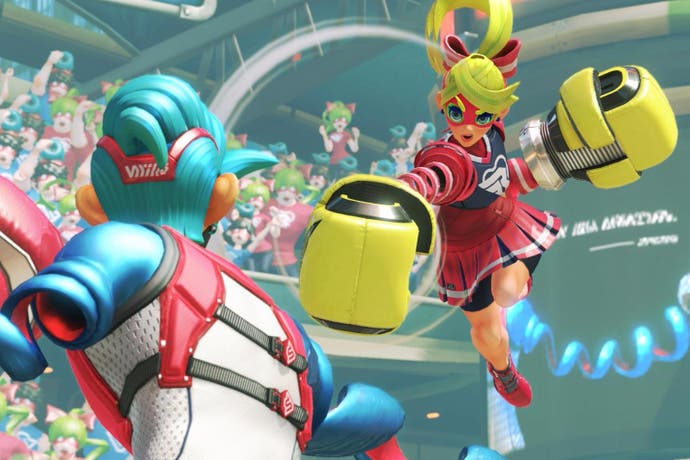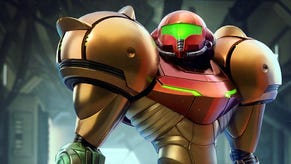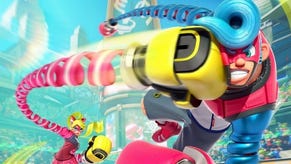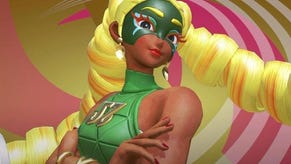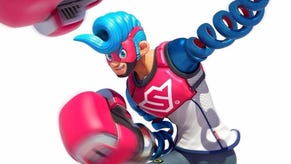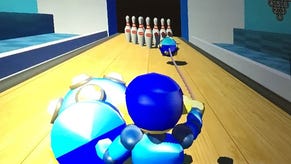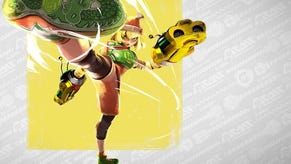Arms is that rare thing - a motion control game that works
Pretty handy.
It's been more than a decade since motion control took the world by storm on Wii and it often feels like a distant memory we're more than happy to forget. Building a fighting game, a genre that's all about precision inputs, might seem overly optimistic, but that's exactly what Nintendo has set out to do with Arms. And you know what? After spending a few hours playing an updated build of the game this week, I can say that it works.
The idea is simple - you hold the two Joy-Con like a pair of joysticks in an upright position. By tilting your hands together, you can move your character around the battlefield. You attack by physically punching outward where each punch responds to a twist of the wrist letting you curve each hit as you please. The R and L buttons allow you to jump and dash, respectively, while the triggers launch into your flurry attack. Turn the Joy-Con sideways and you can block. It seems simple enough on the surface, but there is a lot of hidden depth here - the responsive motion controls enable a level of precision that's a pleasant surprise.
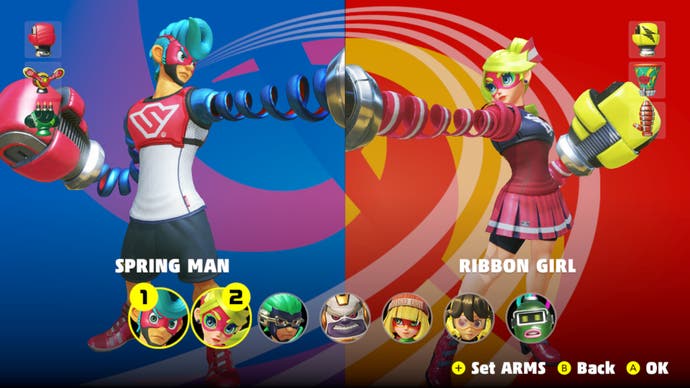
In many ways, the twin-stick design recalls Sega's seminal Virtual On series with its focus on arena-based one-on-one battles. By placing a premium on positioning and timing, the strategy changes dramatically from that of a typical fighting game. Like Virtual On, Arms presents players with left, right and centre attack options which can be customised between each round. Dodging and countering your opponent's attacks feels great and learning to take advantage of each character's unique features brings an extra layer of strategy to the mix. Arms simplifies the formula somewhat by always maintaining a lock on your opponent, but the basic idea of dodging and countering feels satisfying.
The similarities to Virtual On only deepen when you look at Arms' stage design. The first demo upon the reveal in January was limited to a small number of simplistic arenas, but this updated version offers a wide variety of stages filled with elevation changes, barriers and other tricks. In one new stage, Cinema Deux, players are dropped just outside a theatre house and asked to fight on and around a collection of luxury cars littering the street. The cars provide cover from attacks while simultaneously forcing players to utilise movement and jumping abilities. In another, Ribbon Ring, platforms raise and lower throughout the map forcing players to mix up their strategy on the fly. Unlike a typical fighting game, these arenas play a significant role in the experience.
In that sense, Arms occupies a space shared by the likes of Super Smash Brothers and Capcom's dearly missed Power Stone series - both fighting games with a focus on movement and stage design. Like them, Arms features a power-up system with large metal orbs often dropping onto the stage mid-battle. Slam one of these orbs and you'll trigger anything from an explosive bomb to a water bottle full of healing energy.
There's also a huge selection of Arms available for each character. While I only had access to the three defaults for each one, it was interesting to see how, say, Min Min's Dragon lasers interacted with Byte & Barq's closer range Bubb fists. Add all these these elements together and you wind up with a slick motion controlled game which does not reward waggle - flailing your arms around will lead to failure.
As impressive as the motion controls are it's also possible to play Arms using a standard controller. In this configuration, you move your player using the left analog stick while attacking with the ZR and ZL or A and B buttons. The X and Y buttons allow you to jump and dash while your flurry attack is unleashed using L and R. Blocking is assigned to a click of the left stick. It works well enough but feels less engaging than the dual stick motion control setup. There is a sense of granularity available when punching using the motion controls that is difficult to replicate using the analog stick. Curving punches feels less natural and the game just isn't as engaging in this mode. Still, it's great to have the option and it's likely that different players will find their own preference.
All of this is combined with a slick audio visual package. Bright, colourful characters dance around the screen at a rock solid 60 frames per second while catchy tunes, sometimes with backing vocals, blast through the speakers. The presentation grabs you the second you pick up the controller and draws you into its world. It's a beautiful game.
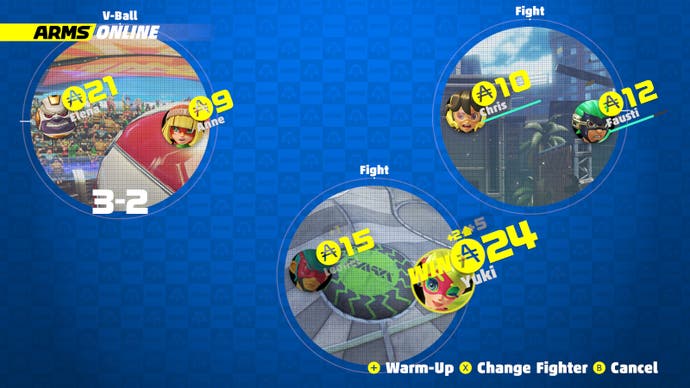
There's more to Arms than the standard one-on-one battles as well. While this is key to any fighting game, Arms offers a variety of additional modes and options. We didn't get a chance to play the full single player experience just yet but we did take a crack at the 'one versus one hundred' mode. It's basically a survival mode that pits you against increasingly difficult AI opponents. The twist here is that several of these enemies can appear in the arena at once forcing you to deal with multiple fists flying your way at any point.
There's also a set of mini-games here playable with multiple people including Hoops and V-Ball. Hoops asks players to focus on grab attacks allowing you to dunk or shoot them into a nearby basketball hoop for points. V-Ball, then, is basically Volleyball where the ball is replaced with a bomb. Lovely. Lastly there's Skillshot which places each player on either side of a court with pop-up targets appearing in the middle. The player that shatters the most targets wins. All simple stuff but still a lot of fun.
Perhaps the mode that will garner the most attention, though, are the four player battles. You can opt to play in four player split-screen on a single Switch console or link up multiple Switches together so everyone can enjoy their own screen. The mode I played tethered each player to a team-mate forcing us to work together to take down the enemy. The rope mechanic prevents you from straying too far from your partner - at least until they're defeated then you're given free range of movement. It's incredibly chaotic but a lot of fun.
That a game released in 2017 with a focus on motion controls could feel this responsive is a feat in itself, but it's the generosity of features, the abundance of characters and the sheer amount of style that push this over the top. It's a deeper game than you might have expected, and with Splatoon already demonstrating Nintendo's ability to put a twist on a popular genre, Arms looks set to pull the same trick for fighting games.
